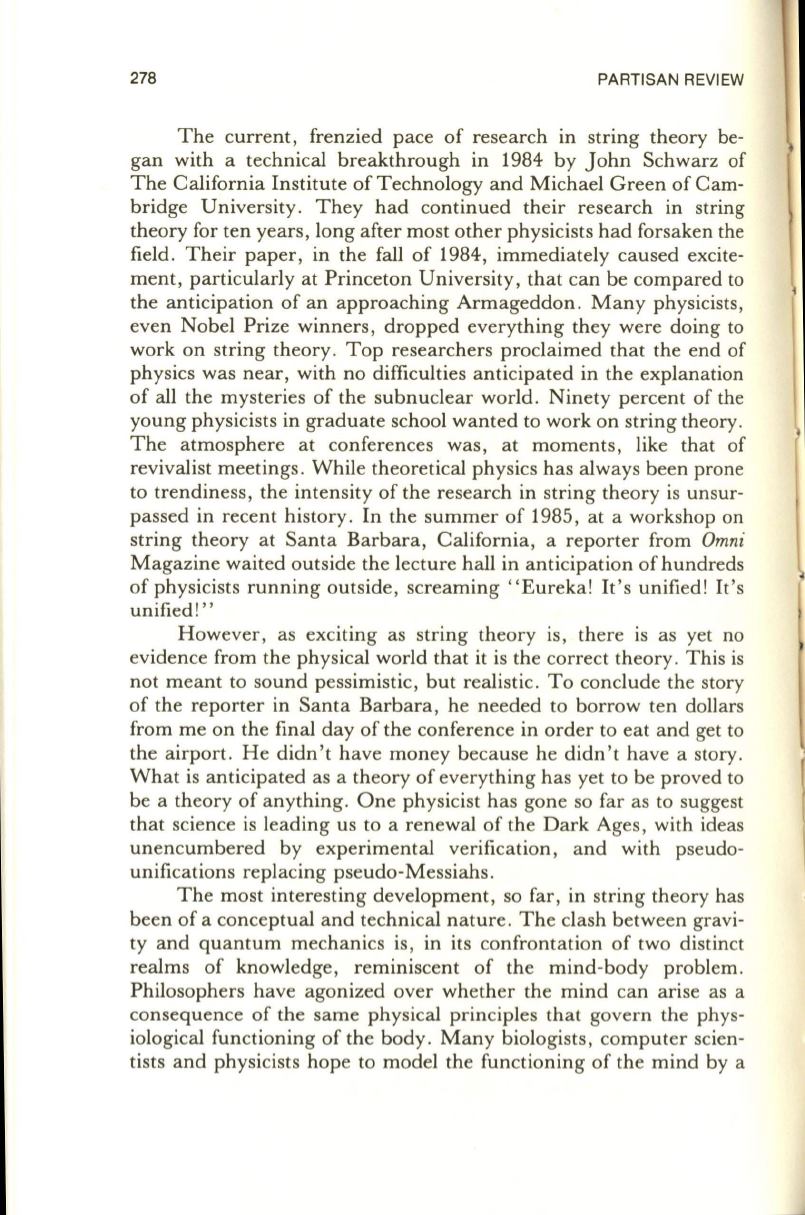
278
PARTISAN REVIEW
The current, frenzied pace of research in string theory be–
gan with a technical breakthrough in 1984 by John Schwarz of
The California Institute of Technology and Michael Green of Cam–
bridge University. They had continued their research in string
theory for ten years, long after most other physicists had forsaken the
field . Their paper, in the fall of 1984, immediately caused excite–
ment, particularly at Princeton University, that can be compared to
the anticipation of an approaching Armageddon. Many physicists,
even Nobel Prize winners, dropped everything they were doing to
work on string theory. Top researchers proclaimed that the end of
physics was near, with no difficulties anticipated in the explanation
of all the mysteries of the subnuclear world . Ninety percent of the
young physicists in graduate school wanted to work on string theory.
The atmosphere at conferences was, at moments, like that of
revivalist meetings. While theoretical physics has always been prone
to trendiness , the intensity of the research in string theory is unsur–
passed in recent history. In the summer of 1985, at a workshop on
string theory at Santa Barbara, California, a reporter from
Omni
Magazine waited outside the lecture hall in anticipation of hundreds
of physicists running outside , screaming "Eureka! It's unified! It's
unified! "
However, as exciting as string theory is, there is as yet no
evidence from the physical world that it is the correct theory. This is
not meant to sound pessimistic, but realistic . To conclude the story
of the reporter in Santa Barbara, he needed to borrow ten dollars
from me on the final day of the conference in order to eat and get to
the airport. He didn't have money because he didn't have a story .
What is anticipated as a theory of everything has yet to be proved to
be a theory of anything. One physicist has gone so far as to suggest
that science is leading us to a renewal of the Dark Ages, with ideas
unencumbered by experimental verification, and with pseudo–
unifications replacing pseudo-Messiahs .
The most interesting development, so far, in string theory has
been of a conceptual and technical nature . The clash between gravi–
ty and quantum mechanics is, in its confrontation of two distinct
realms of knowledge, reminiscent of the mind-body problem.
Philosophers have agonized over whether the mind can arise as a
consequence of the same physical principles that govern the phys–
iological functioning of the body. Many biologists , computer scien–
tists and physicists hope to model the functioning of the mind by a


